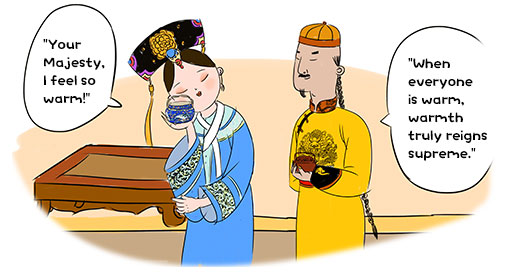Staying Warm Was a Luxury
As early as the pre-Qin era (before 221 BCE), the imperial palace had already started exploring ways to provide heating for the monarchs in winter. By the Western Zhou dynasty (1046–771 BCE), there were three main methods: setting up stoves inside rooms, placing charcoal in braziers, and using hot charcoal to heat floors. Back then, charcoal was a luxury item that only the imperial palace and a few wealthy households could afford.
By the Ming (1368–1644) and Qing (1644–1911) dynasties, palace heating had become quite “advanced”, and they even had a special department for supplying heating. For example, the Ming dynasty had the Department of Cherishing Firewood (Xixin si) in charge of firewood supply and winter heating, while the Qing dynasty had the Firewood Depot (Xin ku) responsible for storing and transporting firewood and coal. So, what interesting heating methods did they have in the imperial palace?
Fire Floor HeatingHeating Device: Fire Floor
Ever heard of floor heating? Today, it’s a popular way to keep warm in winter. The principle is to heat water and run it through pipes beneath the floor, so you feel warm even walking barefoot.
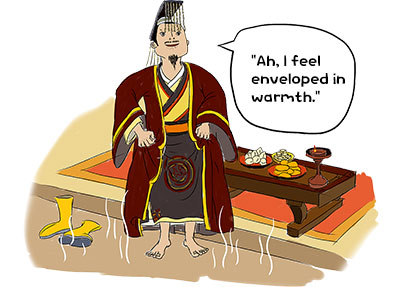
In the Forbidden City, they had a similar method called “fire floor heating”, which was the main form of heating in winter during the Ming and Qing dynasties. Instead of using hot water, they used hot air. Underneath the palace floors, smoke pipes laid with bricks and stones allowed heat from burning fires to circulate, warming the floor above. Ingeniously designed, these pipes also ran beneath the beds, creating a heated bed much like the heated kang in northern China.
Today, you can still see the chimney outlets of the fire floor heating system outside the gables of the rear halls of the Palace of Great Benevolence (Jingren gong) and the Eastern Warmth Chamber (Dongnuan ge) of the Hall of Mental Cultivation (Yangxin dian), and under the corridor of the side hall of the Palace of Longevity and Good Health (Shoukang gong).
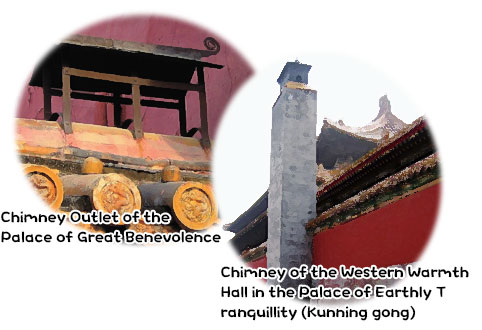
Charcoal Braziers Warming the HallsHeating Device: Charcoal Brazier
Those who have read Dream of the Red Chamber will surely recall the poignant scene of “Daiyu Burning Her Poems”. Upon learning of Baoyu’s engagement to Baochai, Daiyu was overwhelmed with sorrow, falling gravely ill. Feeling chilled, she instructed her maid, Xueyan, to light a brazier. Into its flames, she cast the handkerchief gifted by Baoyu and her silk scrolls inscribed with poetry, turning them to ashes. This also illustrates one traditional way of warding off the cold—burning charcoal in a brazier.
In the imperial palace, braziers were frequently used for warmth during winter, known in the Qing dynasty as xun dian (warming the halls). Even then, charcoal remained a precious commodity, and brazier heating was a privilege reserved for the emperor, empress dowager, empress, high-ranking consorts, and certain significant halls. Thus, the warmth of a charcoal brazier was a rare luxury, not granted to everyone nor to every hall within the palace walls. However, charcoal braziers posed a fire hazard if embers were not fully extinguished.
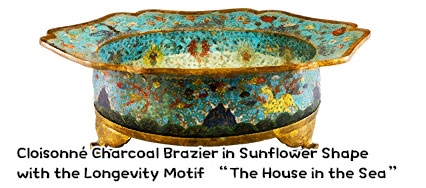
One day during the reign of Emperor Jiaqing (r. 1796–1820), a palace eunuch named Hao Shitong, tasked with managing the fires in the Palace of Heavenly Purity (Qianqing gong), succumbed to idleness. He failed to fully extinguish the embers and carelessly left them smouldering near the nanmu partition of the eastern corridor of the palace. Little did he know that after his departure, the embers would reignite, their flames creeping into the wooden partition. By the time the smell of smoke drew attention, the Palace of Heavenly Purity was already engulfed in roaring flames. The inferno consumed not only the Palace of Heavenly Purity but also the Hall of Union (Jiaotai dian), the Hall of Manifesting Benevolence (Zhaoren dian), and the Hall of Promoting Virtue (Hongde dian), reducing them to ashes. This calamity stirred the “high echelons” of the Forbidden City into urgent action, leading them to implement stringent fire safety measures and establish regulations for the fire brigades of the Forbidden City!
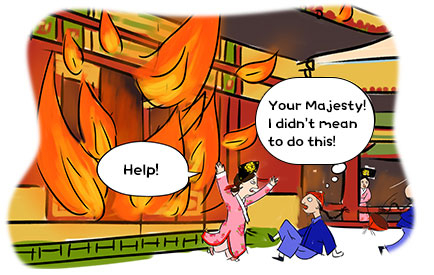
The Ancient “Heat Packs”Heating Devices: Hand Stove and Foot Stove
The ancients, wise to the chill that creeps first into the hands and feet, devised ingenious ways to stay warm: the hand stove and foot stove. Filled with charcoal during winter, these portable heaters warmed both hands and body, much like today’s modern heat packs—practical, portable, and utterly delightful.
Most stoves were made of copper, perfect for conducting and retaining heat. But as palace utensils, they needed to be as beautiful as they were functional. Some were adorned with intricate enamel inlays, featuring delicate openwork carvings of floral patterns. For ease of use, artisans added small handles, making them easy to carry. Ingeniously designed, these stoves radiated just the right warmth without becoming too hot to touch.

With these large and small "heaters", the imperial family stayed cozy through the harsh winters. Don’t you think the heating methods of the Ming and Qing palaces were stylish, too?
